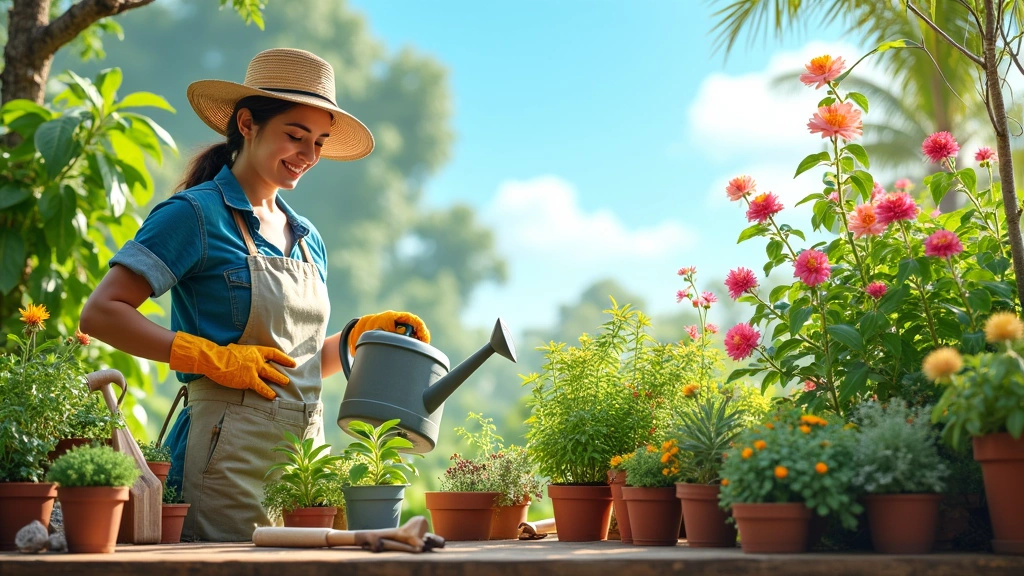Gardening is more than just a hobby; it’s a journey into nature’s beauty that can transform any space into a serene escape.
With the right plant care tips, anyone can nurture lush indoor and outdoor gardens that burst with life.
This guide offers 20 essential plant care tips, perfect for both novice and experienced gardeners looking to enhance their plant health.
Let’s get started on the path to greener thumbs and thriving gardens!
Contents
- 1. Understand Your Plant’s Environment
- 2. Choose the Right Soil
- 3. Water Wisely
- 4. Fertilize Regularly
- 5. Prune for Growth
- 6. Monitor for Pests
- 7. Provide Adequate Light
- 8. Keep Humidity in Check
- 9. Understand Plant Varieties
- 10. Repot When Necessary
- 11. Use Companion Planting
- 12. Consider Seasonal Changes
- 13. Use Organic Pest Control
- 14. Create a Plant Care Schedule
- 15. Learn from Your Mistakes
- 16. Embrace Diversity in Your Garden
- 17. Share Your Passion
- 18. Use Tech to Enhance Care
- 19. Cultivate Patience
- 20. Celebrate Your Successes
1. Understand Your Plant’s Environment
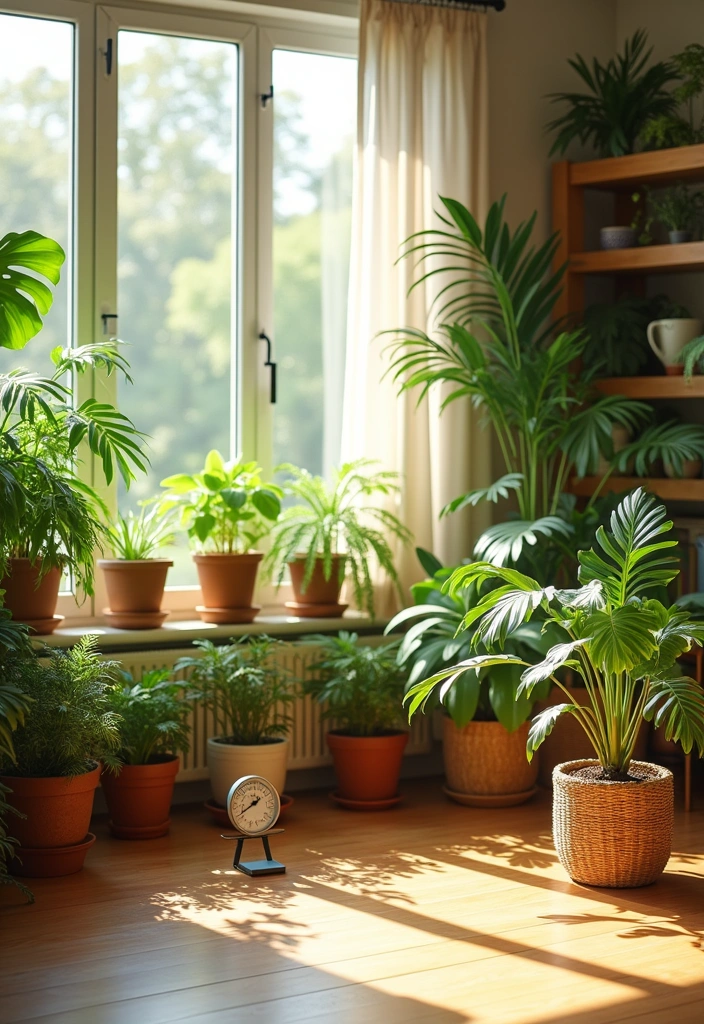
Every plant has specific requirements regarding light, humidity, and temperature, which are essential for their overall health.
To create the ideal environment for your plants, start by researching their native habitats to mimic those conditions as closely as possible.
Utilizing a Light Meter for Plants can help you determine the optimal light levels for each species, ensuring that they receive the right amount of sunlight throughout the day.
Additionally, a Digital Thermo-Hygrometer can assist in monitoring humidity and temperature, allowing you to make necessary adjustments to keep your plants thriving.
Finally, consider documenting your plant care journey in a Plant Care Journal, which can help you track their progress and make informed decisions to promote vigorous growth.
2. Choose the Right Soil
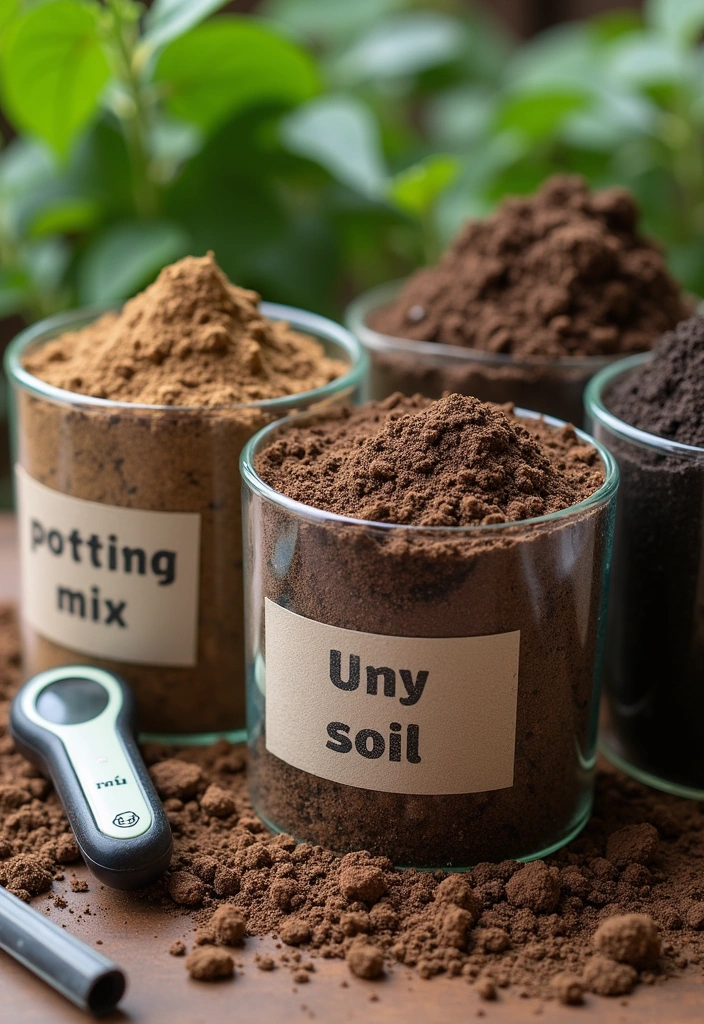
Soil serves as the essential foundation for any garden, whether it’s indoors or outdoors.
Choosing the right type of soil can drastically influence your plants’ growth and overall vitality. For houseplants, consider using an organic potting soil that delivers vital nutrients and enhances drainage.
In contrast, garden beds thrive in rich, loamy soil that retains moisture while allowing for proper aeration.
Additionally, testing your soil’s pH using a soil pH testing kit can help you adjust it for specific types of plants, ensuring they have the best possible conditions for optimal growth.
3. Water Wisely
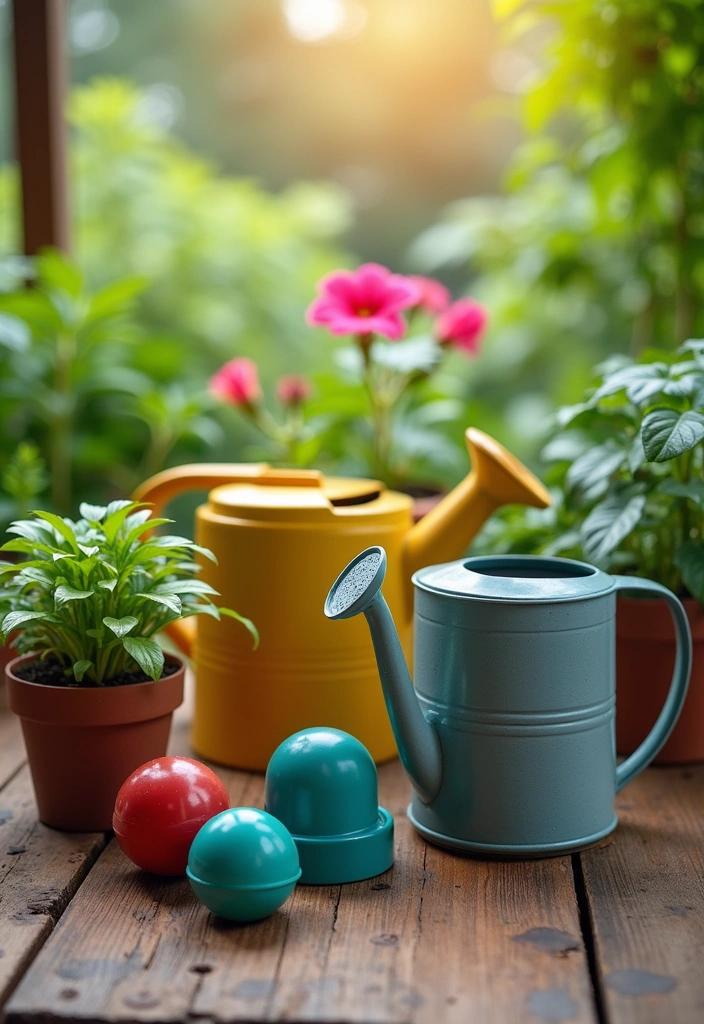
Watering is a fundamental element of successful plant care.
Each plant species has unique water needs, and many gardeners mistakenly overwater, which can result in root rot.
To prevent this, always assess the soil moisture before watering; if the top inch of soil feels dry, it’s time to give your plants a drink.
For added convenience, consider investing in self-watering planters or decorative watering cans to maintain consistent moisture levels, particularly if your schedule is hectic.
Additionally, using a moisture meter can help you accurately gauge when it’s time to water, ensuring your plants thrive both indoors and outdoors.
4. Fertilize Regularly
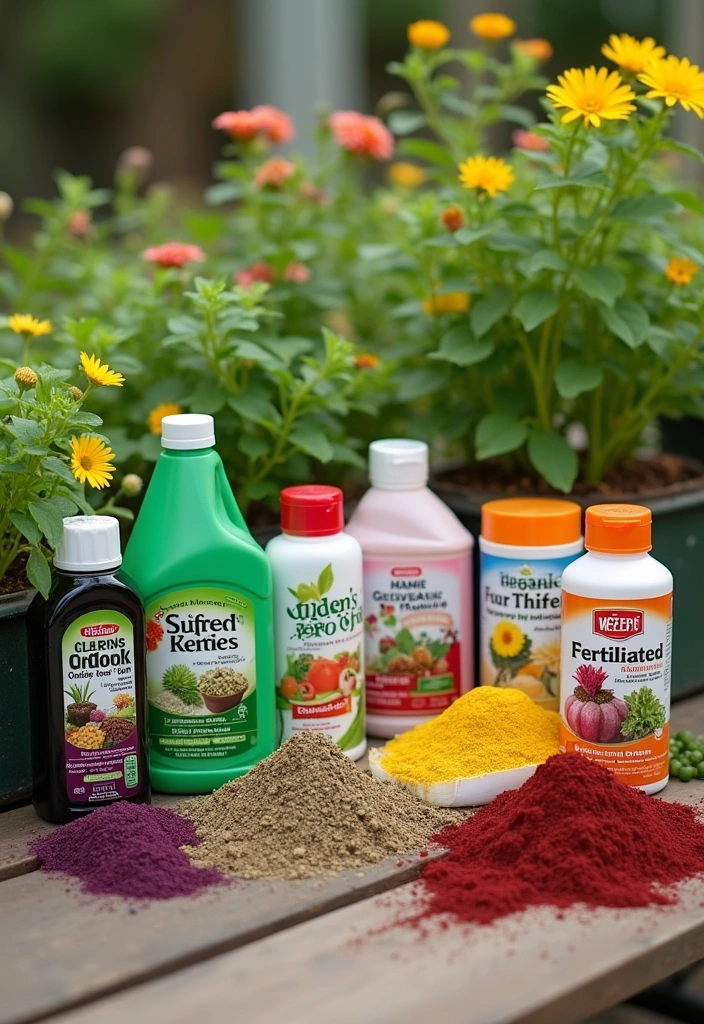
Fertilizing your plants is crucial for providing them with the essential nutrients that may become depleted in potting soil or garden beds over time.
To ensure your plants thrive, choose fertilizers that are balanced and tailored to their specific needs, whether they are flowering plants, lush foliage, or productive vegetables. For a quick nutrient boost, consider using an Organic Liquid Fertilizer during the growing season, which can be easily applied to enhance growth.
Alternatively, for long-term nourishment, slow-release granules are an excellent choice, such as these Slow-Release Granules, which gradually feed your plants over time.
However, it’s important to exercise caution when fertilizing; over-fertilization can do more harm than good, potentially damaging your plants instead of helping them flourish. For precision in applying nutrients, consider using a Fertilizer Injector, which allows for controlled and efficient application.
5. Prune for Growth
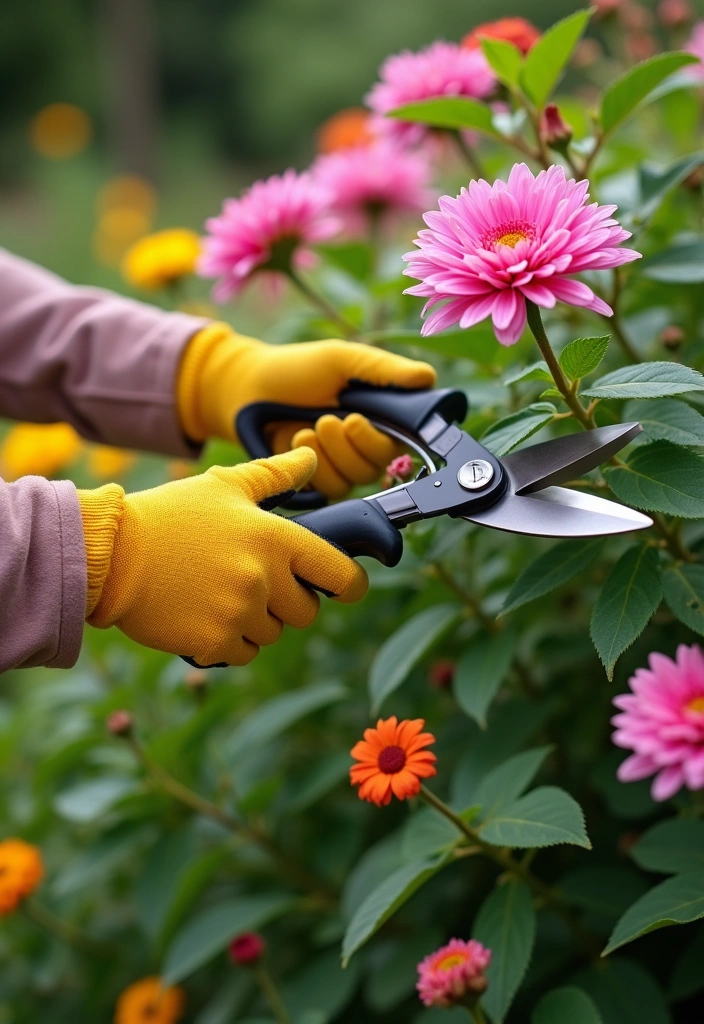
Regular pruning is essential for encouraging healthy growth and maintaining the aesthetic appeal of your plants. By removing dead or yellowing leaves, spent flowers, and any leggy growth, you can promote bushier and more compact plants that thrive in both indoor and outdoor settings.
To assist you in this vital task, consider using high-quality gardening pruning shears, which allow for clean cuts and minimize damage to your plants. Additionally, wearing durable garden gloves will protect your hands while you prune, making the experience safer and more comfortable.
In outdoor gardens, proper pruning also helps manage the size and shape of plants, ensuring they don’t overcrowd each other. For those new to gardening, a plant care instruction manual can provide valuable guidance on the best pruning techniques for various species. Always remember to use clean, sharp tools to prevent disease transmission and achieve the best results in your gardening efforts.
6. Monitor for Pests
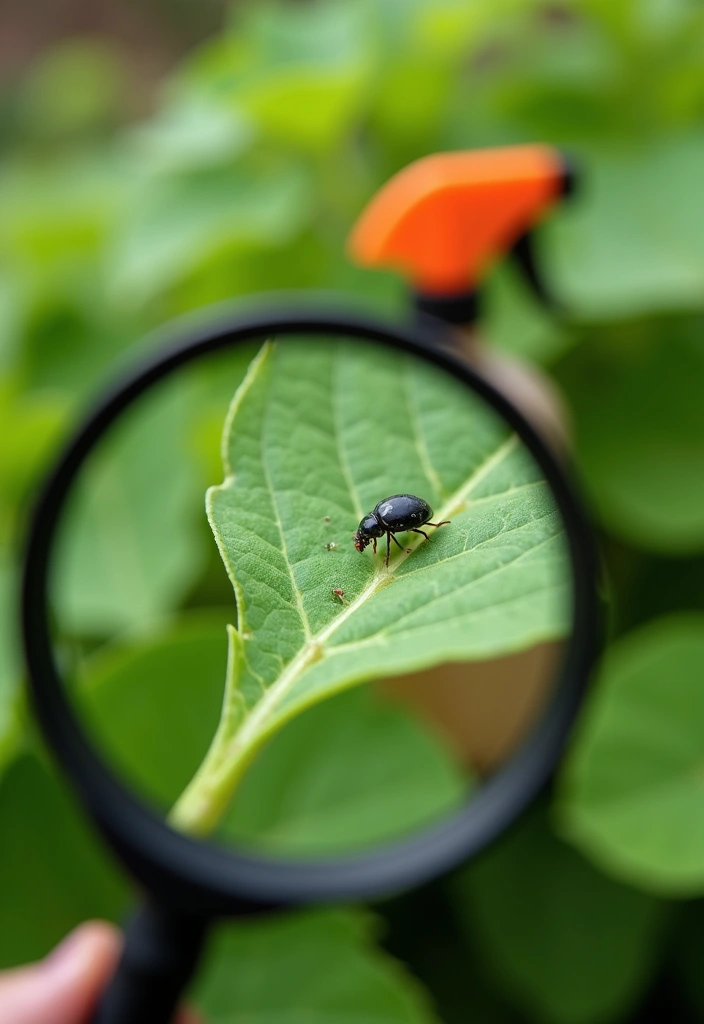
Pests can quickly undermine your gardening efforts, so it’s essential to regularly inspect your plants for any signs of trouble.
Keep an eye out for discolored leaves, holes, or visible insects, and take immediate action to address any infestations.
For effective pest control, consider using insecticidal soap or neem oil spray, both of which can manage common pests while being gentle on beneficial insects.
Additionally, utilizing pest monitoring traps can help you detect problems early, ensuring that you can intervene promptly.
Regular inspections and timely treatments are vital to maintaining a healthy and thriving garden.
7. Provide Adequate Light
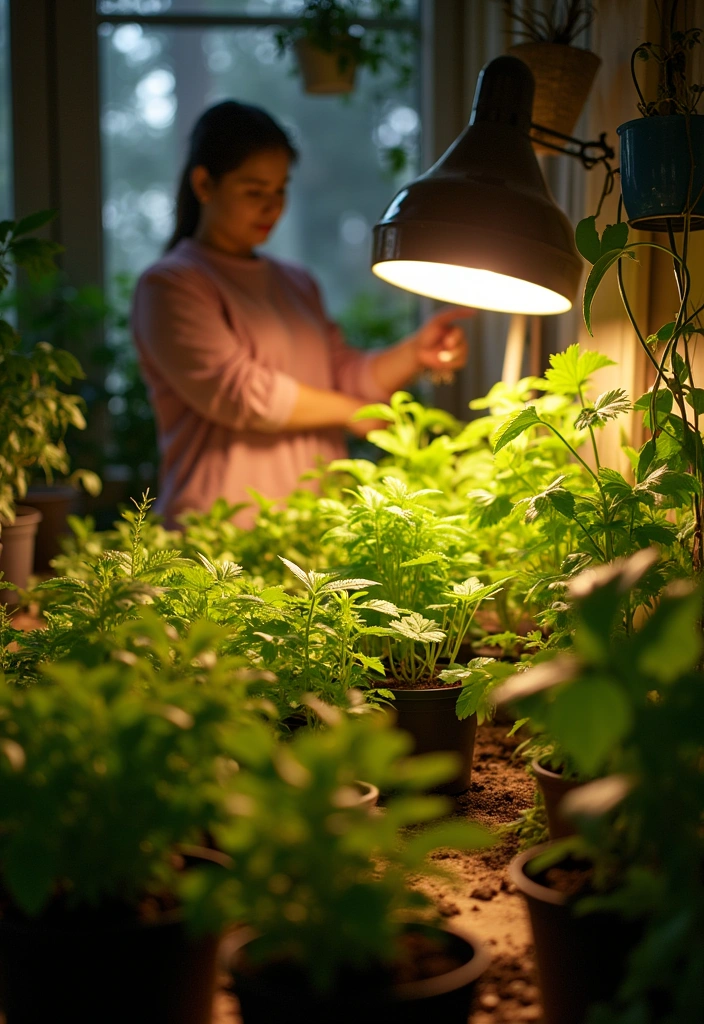
Light is essential for photosynthesis, making it crucial to provide the right amount of light for your plants to thrive.
Each plant type has unique light requirements, so be sure to position them accordingly—some flourish in bright, direct sunlight, while others are better suited for low-light environments.
To enhance natural light, especially during the darker months or in spaces without windows, consider using an LED Grow Light. This effective solution can help your indoor garden stay vibrant and healthy.
An Adjustable Grow Light Stand can provide the flexibility you need to position your grow lights at the perfect height for your plants.
Additionally, using a Light Timer for Indoor Plants can simplify your routine by ensuring your plants receive consistent light exposure throughout the day.
Don’t forget to rotate your plants occasionally to guarantee that all sides get equal light exposure, promoting balanced growth.
8. Keep Humidity in Check
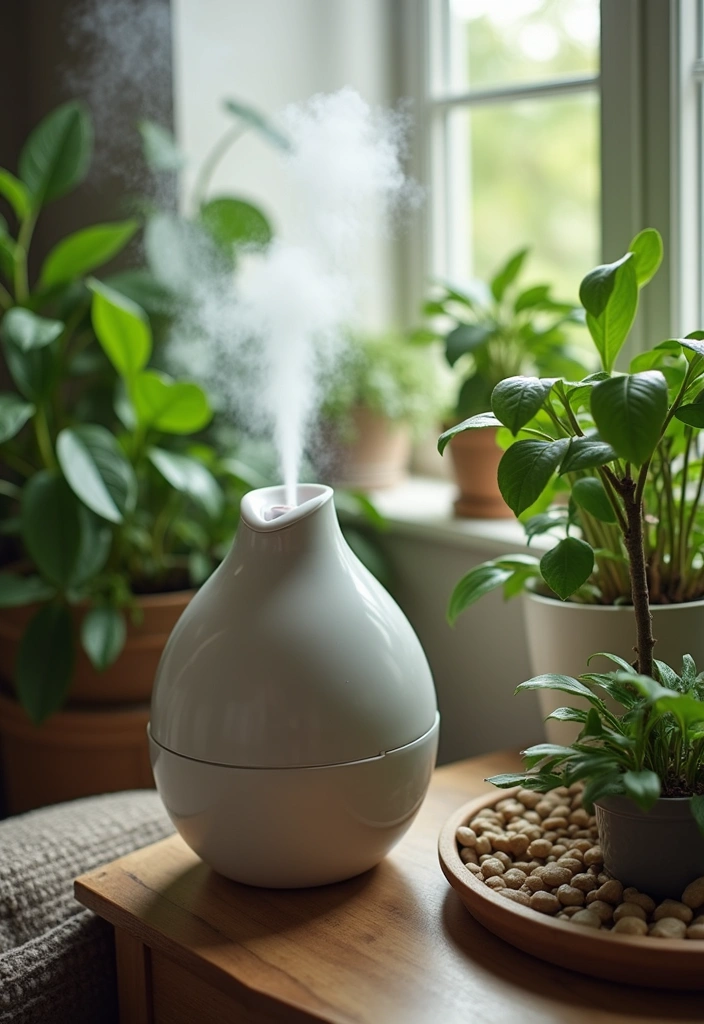
Many houseplants flourish in humid environments, so it’s essential to keep an eye on humidity levels in your home. If you find that the air indoors is too dry for your plants, an Ultrasonic Humidifier can help create a more suitable atmosphere.
Additionally, placing a tray of water filled with pebbles near your plants can increase humidity naturally. Grouping your plants together can also foster a microclimate with elevated moisture levels, benefiting their overall health.
For outdoor gardens, applying mulch is a great strategy to retain soil moisture and protect the roots of your plants. To ensure you’re maintaining the right humidity levels, consider using a Digital Humidity Meter to monitor conditions effectively.
9. Understand Plant Varieties
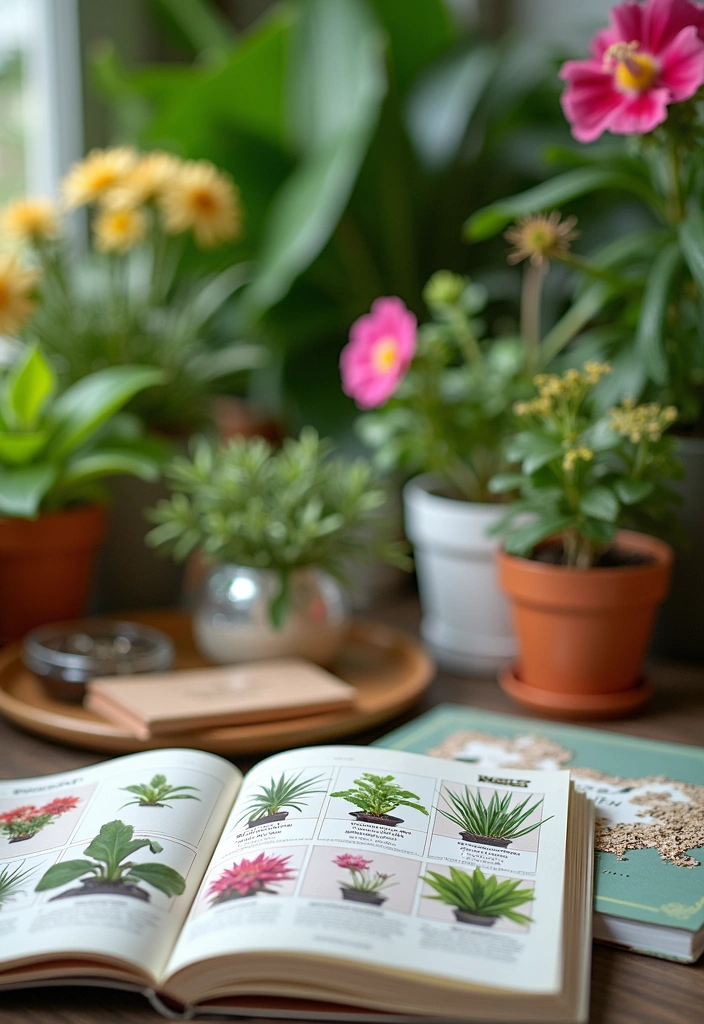
Understanding the unique needs of various plant species is essential for effective plant care.
Take the time to research the growth habits, watering requirements, and sunlight preferences of each plant variety in your collection.
For a comprehensive resource, consider using a Plant Care Reference Guide to assist you with this knowledge.
Some plants may have special care needs during their dormant periods, while others can flourish throughout the year.
Additionally, a Plant Identification App Subscription can help you quickly identify and learn about new varieties, making it easier to care for each one properly.
By understanding these nuances and utilizing targeted resources, such as variety-specific fertilizers, you can customize your care routine and significantly improve the health and vitality of your plants.
10. Repot When Necessary
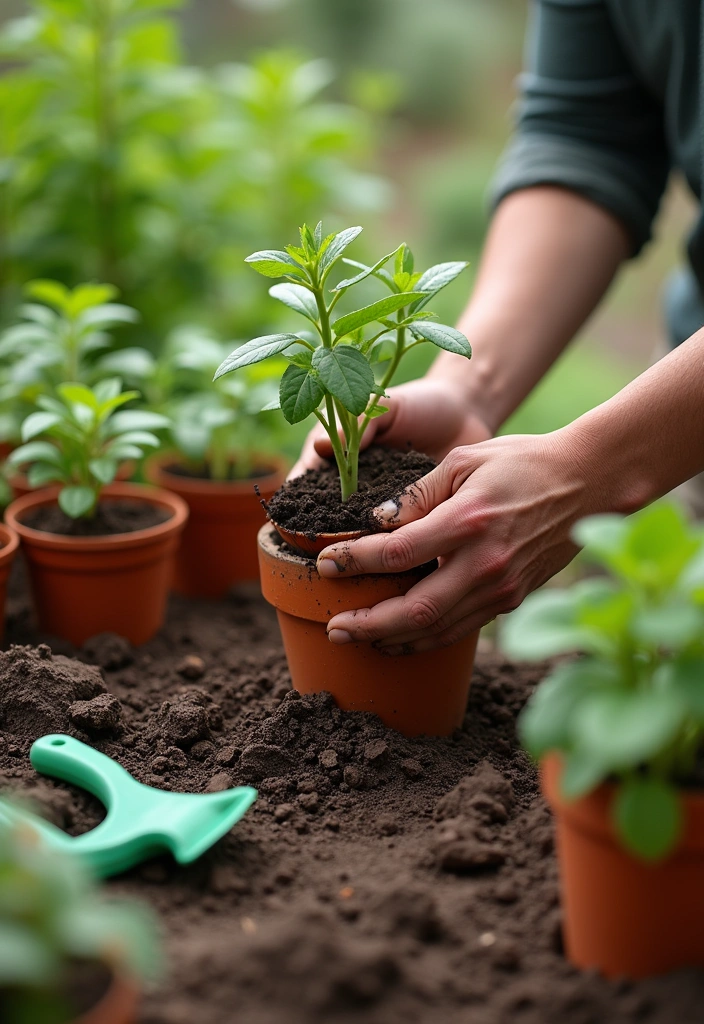
Repotting is a crucial step for any plant that has outgrown its container or exhausted the nutrients in its soil.
You can identify when it’s time to repot by looking for signs such as roots pushing through the drainage holes or overall stunted growth.
When you do decide to repot, select a pot that is one size larger to give your plant room to grow. A great option for this is a Set of Plant Pots, which provides various sizes to accommodate your plants’ needs.
Additionally, using fresh potting mix will provide your plant with a much-needed nutrient boost and enhance soil structure and drainage. To make the repotting process easier, consider using a Repotting Tools Set that can help you handle the task efficiently and effectively.
11. Use Companion Planting
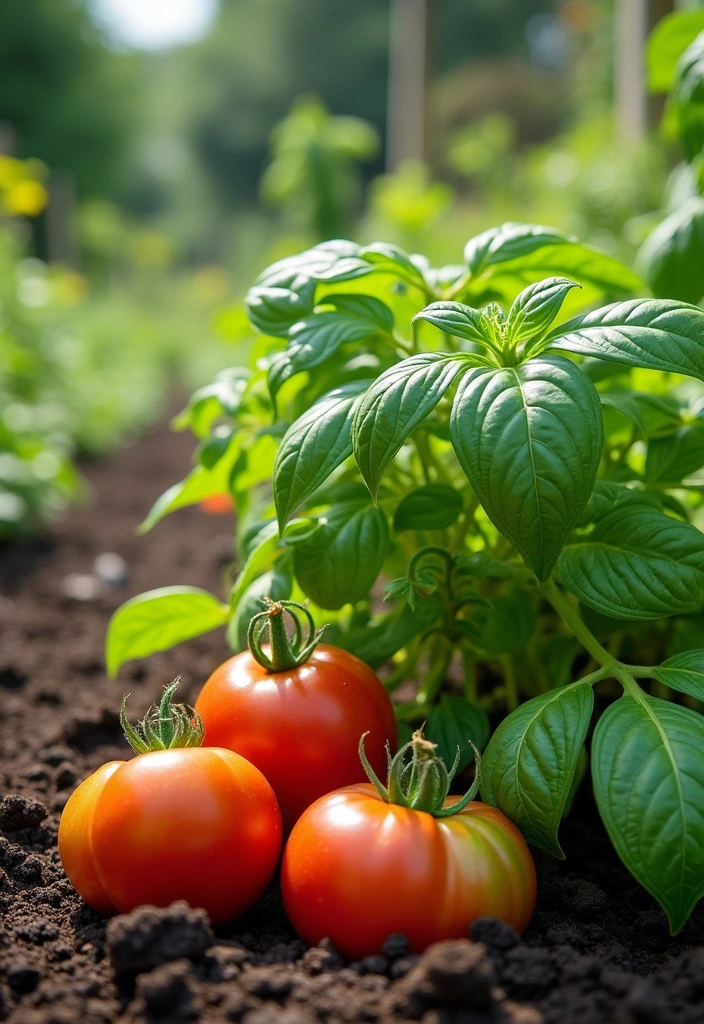
Companion planting is a highly effective gardening technique that promotes plant growth and helps deter pests by strategically positioning plants together. For example, pairing tomatoes with basil not only enhances their flavor but also acts as a natural repellent for harmful insects.
This method shines particularly in outdoor gardens, where different plants can support and benefit each other’s growth. To get the most out of your garden, consider using a comprehensive Companion Planting Guide that details the best combinations for your specific plants and environment.
Additionally, if you’re looking to create an efficient growing space, a Raised Garden Bed Kit can provide the perfect setup for your companion planting endeavors. Researching and implementing these strategies can lead to a flourishing garden that thrives naturally.
12. Consider Seasonal Changes
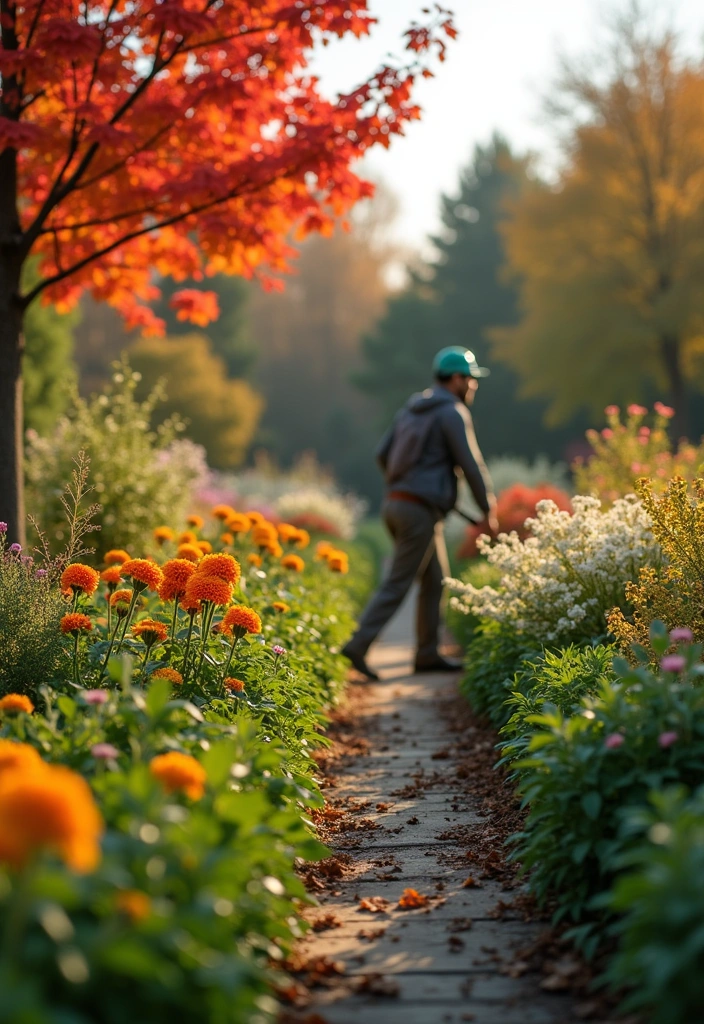
As the seasons transition, it’s crucial to recognize that your plants’ needs will also evolve.
To effectively manage these changes, consider utilizing a Seasonal Gardening Calendar to track temperature shifts and adjust your care routine accordingly.
For instance, during the winter months, many indoor plants will require less frequent watering and may thrive if moved to a sunnier location.
Additionally, outdoor gardens face challenges such as frost during colder months, making it essential to have frost protection fabric on hand.
During the hot summer, ensure your plants are adequately hydrated; a watering timer for plants can help automate this process, making it easier to maintain a healthy garden year-round.
13. Use Organic Pest Control
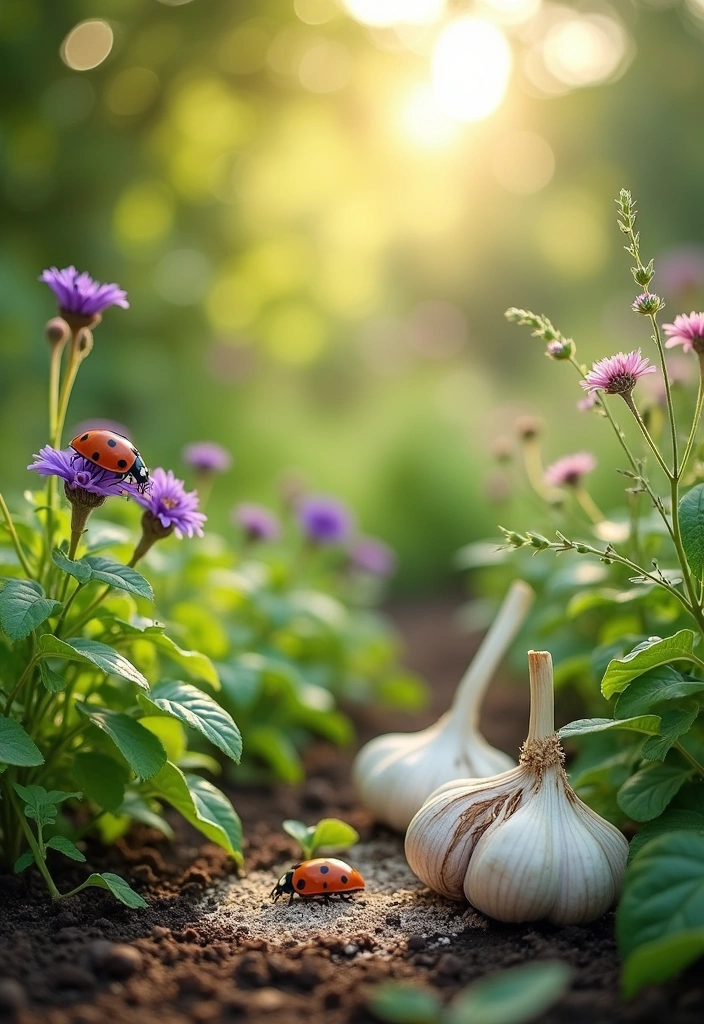
Embracing organic pest control methods is essential for maintaining a vibrant garden while avoiding harmful chemicals.
Utilizing natural solutions, such as diatomaceous earth, is an effective way to deter pests without endangering beneficial insects.
Additionally, creating a welcoming environment for predatory insects like ladybugs can significantly enhance the natural balance within your garden ecosystem. Consider investing in a ladybug habitat kit to encourage these helpful creatures to take residence in your outdoor space.
These organic methods not only promote plant health but also ensure a safer environment for you and your family to enjoy.
14. Create a Plant Care Schedule
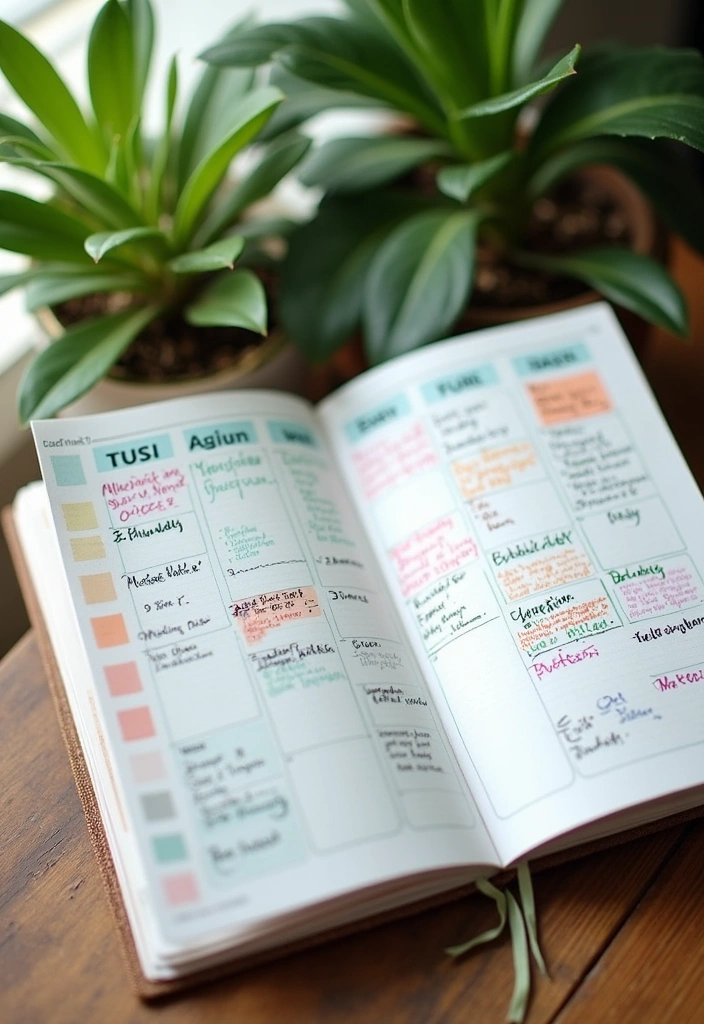
Establishing a consistent plant care routine is essential for maintaining the health and vitality of your indoor and outdoor gardens. One effective way to achieve this is by creating a detailed care schedule that outlines specific days for watering, fertilizing, pruning, and inspecting your plants for pests.
This organized approach not only streamlines your gardening tasks but also ensures that every plant receives the attention it deserves.
To help you stay on track, consider using a Gardening Planner, which can provide a structured format for your plant care commitments.
Alternatively, a digital solution like a Calendar App Subscription can offer reminders and alerts tailored to your schedule.
For a fun and practical option, try using Plant Care Reminder Stickers to label your pots or gardening tools, making it easy to remember when it’s time to give your plants the care they need.
15. Learn from Your Mistakes

Every gardener encounters challenges along the way, and learning from your mistakes is an essential part of the gardening journey.
To help you navigate this process, consider keeping a gardening journal to meticulously track what works and what doesn’t. Document specific care routines and your plants’ responses to different conditions.
Don’t shy away from experimenting with various techniques and adjustments; each setback serves as a stepping stone toward future success. Embracing this learning process not only enhances your skills but also allows you to celebrate your plant care victories.
For those looking to deepen their knowledge, exploring educational gardening books or utilizing a plant care app can provide valuable insights and tips to refine your gardening practices.
16. Embrace Diversity in Your Garden

Diversity in plant selection not only enhances the visual appeal of your garden but also contributes to its overall health. By incorporating a variety of plant species, you can attract beneficial insects and foster a balanced ecosystem that thrives.
Consider enriching your garden with a mix of perennials, annuals, and edibles. To kickstart your diverse planting journey, check out these Diverse Seed Packets, which offer a range of options to create a vibrant display.
Additionally, for those looking to cultivate biodiversity more effectively, the Gardening for Biodiversity Guide is an excellent resource that provides insights on how to promote a flourishing ecosystem in your garden.
Finally, if you’re short on space or want to maximize your gardening potential, consider using Raised Garden Bed Kits to create organized, diverse planting areas that enhance resilience against pests and diseases. Embracing diversity will not only beautify your garden but also ensure its longevity and productivity.
17. Share Your Passion
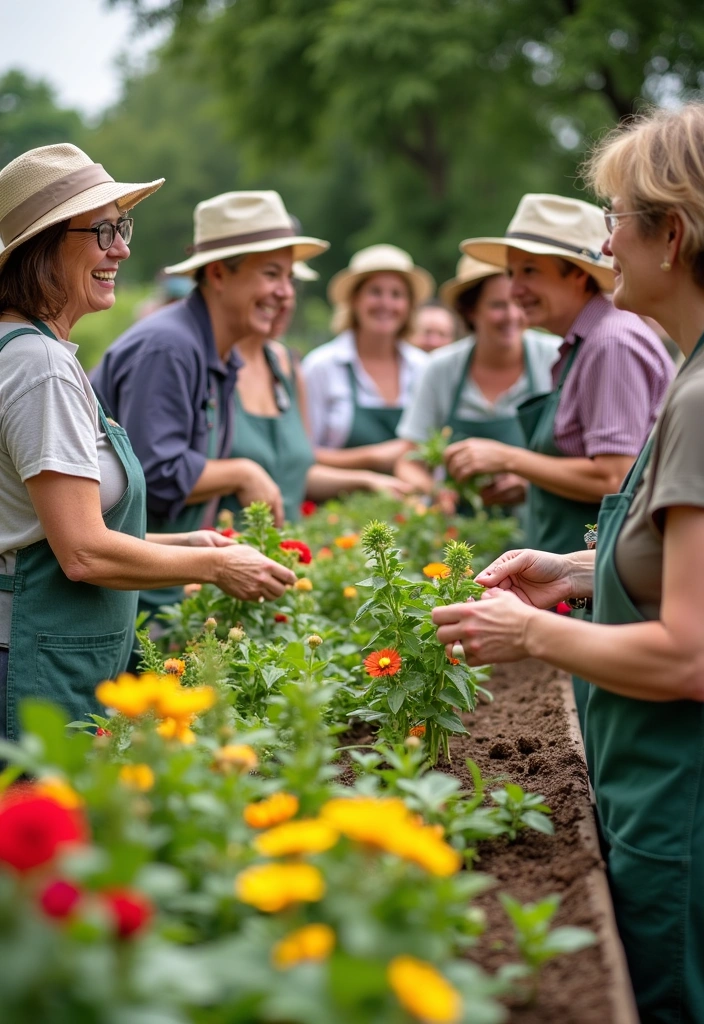
Gardening is often most rewarding when shared with others.
Engaging with fellow plant enthusiasts can enhance your gardening experience and create lasting friendships. Consider joining a Gardening Club Membership to connect with like-minded individuals, where you can exchange valuable plant care tips and share your personal gardening stories.
Additionally, participating in a Social Media Gardening Group Subscription can provide a platform to showcase your plants and discover new ideas from a global community.
Don’t forget to attend local gardening events! Grab some Garden Event Tickets to meet fellow gardeners in person, exchange cuttings, and gather inspiration for your own garden.
This sense of community not only makes gardening more enjoyable but also enriches your knowledge and creativity in cultivating your green spaces.
18. Use Tech to Enhance Care
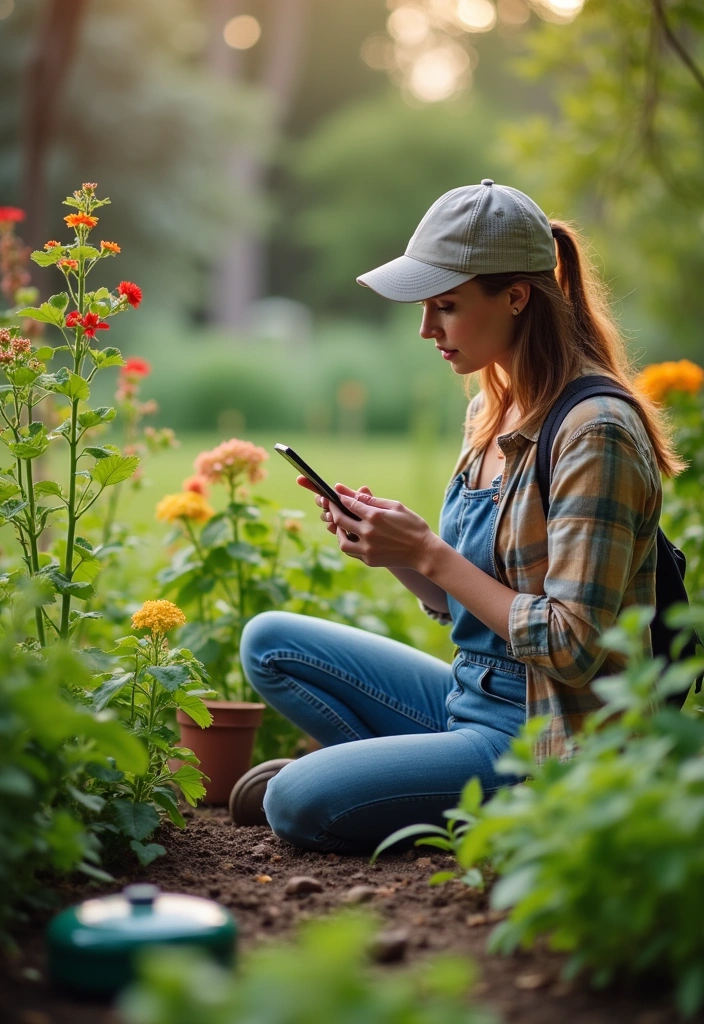
Technology can significantly enhance your gardening experience, making it easier and more efficient to care for your plants.
Consider investing in a Smart Plant Monitoring System that tracks essential factors like soil moisture and light levels. This system can provide you with real-time data, ensuring your plants receive the optimal conditions for growth.
Additionally, a subscription to reliable Gardening Apps can help you manage your plant care schedule and send you timely reminders for watering and fertilizing.
For those looking to automate their gardening routine, an Automated Watering System can be a game-changer, ensuring your plants are consistently watered even when you’re busy.
Explore these innovative tools that can transform your gardening practices and help your indoor and outdoor gardens thrive!
19. Cultivate Patience

Gardening is a journey that unfolds over time, and cultivating patience is crucial for successful plant care.
It’s important to recognize that not every plant will flourish right away; some may need additional attention to acclimate to their surroundings.
To enhance your gardening experience, consider using a Gardening Meditation Guide to help you find tranquility as you nurture your plants.
You can also create a soothing atmosphere with Relaxation Music for Gardening, allowing you to embrace the learning curve and enjoy each moment of growth.
Don’t forget to document your gardening journey in a Garden Journal, celebrating every milestone along the way.
Remember, great things take time, including the beautiful evolution of your garden.
20. Celebrate Your Successes

Every small victory in plant care deserves to be celebrated. Whether it’s a stunning new bloom, a bountiful harvest, or successfully overcoming a pest issue, it’s important to take a moment to appreciate your hard work and dedication.
To enhance your gardening experience, consider exploring the Gardening Celebration Cookbook, which offers delicious recipes to showcase your homegrown produce and inspire delicious meals from your garden.
Additionally, sharing your successes with friends and fellow gardeners can create a supportive community. Why not elevate your social media presence with a Social Media Gardening Course? This course will help you effectively showcase your thriving plants and connect with fellow gardening enthusiasts.
Lastly, if you’re looking for inspiration from others who have walked the same path, check out the Gardening Success Story Book. These stories can motivate you to continue your gardening journey with renewed enthusiasm and joy. Celebrate your achievements and keep growing!
Conclusion

With these 20 plant care tips, you are now equipped to nurture a thriving garden that brings joy and beauty to your life.
Remember that gardening is a journey of learning, patience, and celebration, where each plant tells its own story.
Embrace the process, share your experiences, and enjoy watching your garden flourish!
Note: We aim to provide accurate product links, but some may occasionally expire or become unavailable. If this happens, please search directly on Amazon for the product or a suitable alternative.
This post contains Amazon affiliate links, meaning I may earn a small commission if you purchase through my links, at no extra cost to you.

